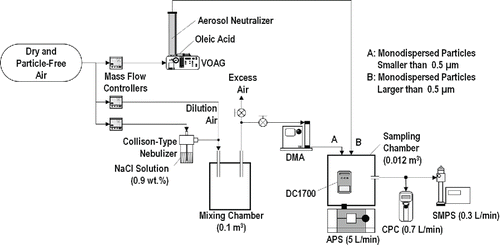Figures & data
Table 1. Aerosol measurement instruments specifications used in the current work.
Figure 2. Experimental setup used to determine the performance of low-cost sensors shown in panel (a). Schematic diagrams of aerosol generation systems shown in panel (b).
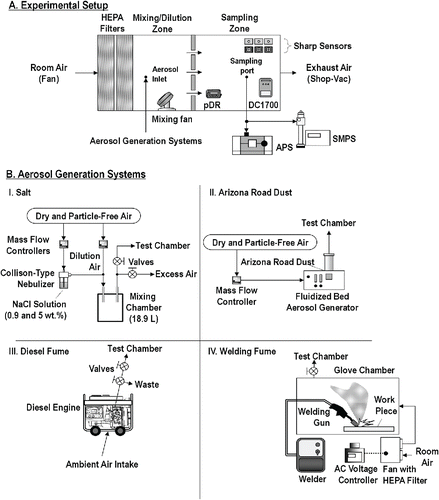
Figure 3. Detection efficiency of the DC1700 by aerodynamic diameter. Particles smaller than 0.5 µm were generated with a nebulizer followed by electrical classification, and the reference concentration was measured with the CPC. Particles larger than 1 µm were generated with the VOAG, and the reference concentration was measured with the APS. Total (fine + coarse) corresponds with the “small bin” of the DC1700 and coarse corresponds with the “large bin” of the Dylos. Fine was calculated as the small bin minus the large bin.
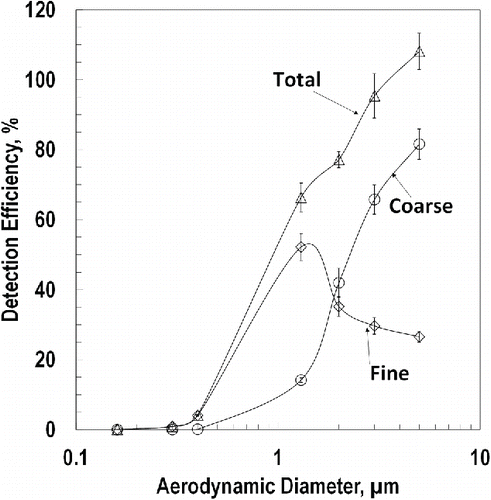
Figure 4. Raw output of the DC1700 relative to reference mass concentration for DC1700. Reference mass concentration was calculated by correcting SMPS + APS data with mass concentration measured with a gravimetric filter for each aerosol. The error bars represent one standard deviation.
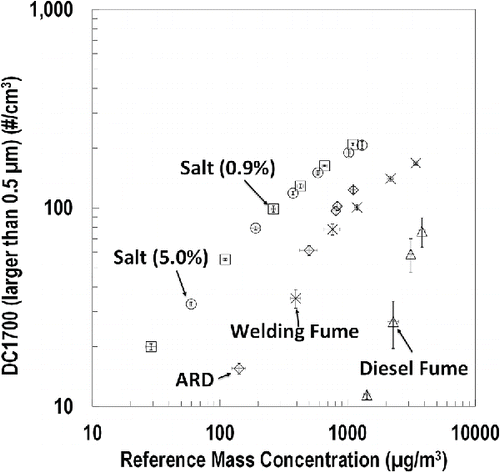
Figure 5. Raw output of the low-cost sensors relative to reference mass concentration for: (a) Sharp DN; (b) Sharp GP. Reference mass concentration was calculated by correcting SMPS + APS data with mass concentration measured with a gravimetric filter for each aerosol. The error bars represent one standard deviation.
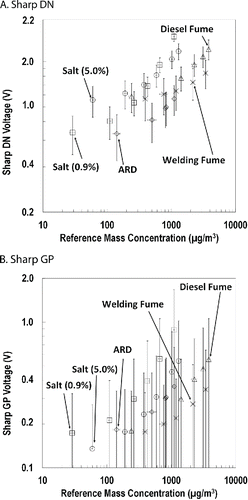
Table 2. Precision of low-cost sensors raw output (raw) and calculated mass concentration based on the regression model (mass) expressed as the mean coefficient of variation (CV,%) by aerosol type.
Table 3. The average calculated mass median diameter (MMD) and geometric standard deviation (GSD) for each aerosol based on the SMPS and APS data.
Table 4. Regression equations to estimate mass concentration (y in µg/m3) from DC1700 number concentration (x = small bin particles/cm3). For particle concentrations (x) less than 106 particles/cm3.
Table 5. Evaluation of mass concentrations measured with the pDR-1500 with reference to those measured with the SMPS and APS.
Table 6. Evaluation of mass concentrations estimated with the DC1700 with reference to those measured with the SMPS and APS. Based on DC1700 particle concentrations less than 106 particles/cm3.
Table 7. Evaluation of mass concentrations estimated with the Sharp sensors with reference to those measured with the SMPS and APS.

